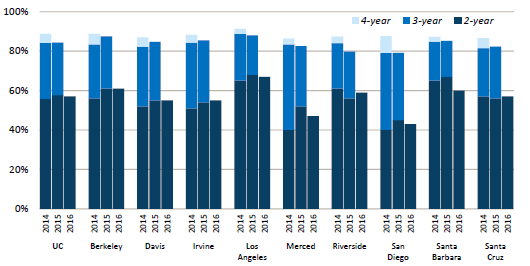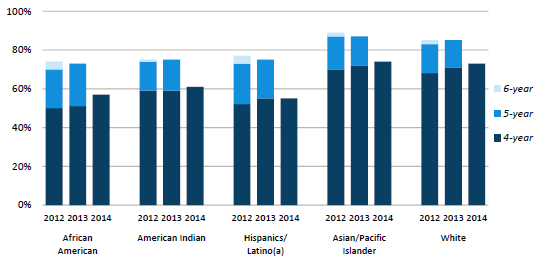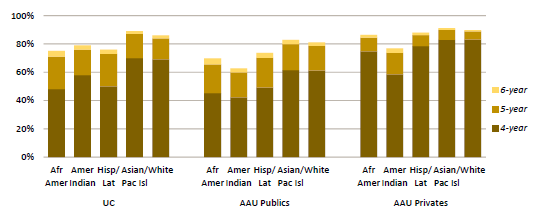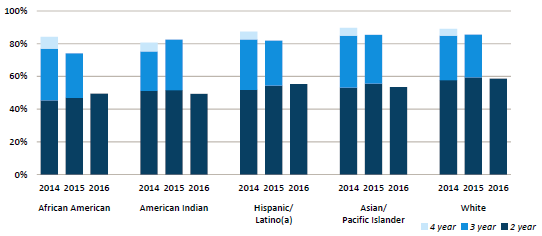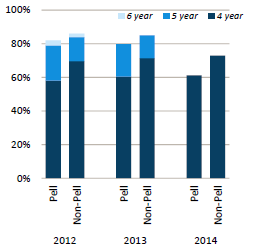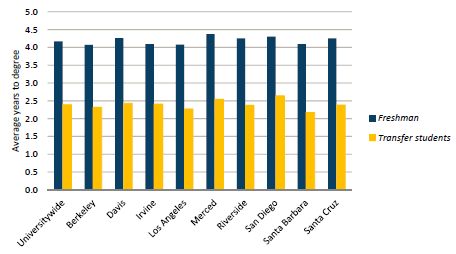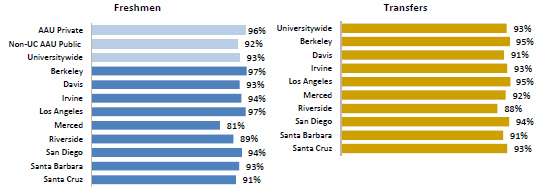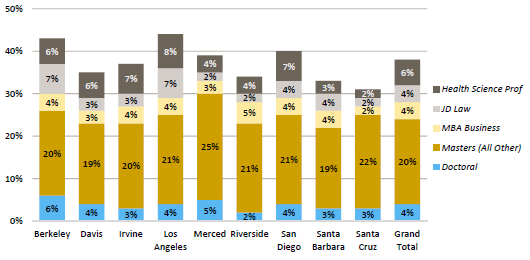chapter spotlight
Alejandro Quiñones, a 2018-19 senior biology and premed major at UC Riverside and first in his immediate family to attend college, lived in one room with his parents and three siblings before coming to Riverside.
Coming to the UC Riverside campus that first summer in 2015 through FastStart, a UC Riverside School of Medicine pipeline program, set the tone for what has been an unforgettable experience.
While he balances a full course load at UC Riverside, Quiñones has found additional ways to gain hands-on experience. He volunteers at the Riverside Free Clinic and the San Bernardino Free Clinic. Quiñones’ job is to help UC Riverside medical students by serving as translator and triage assistant.
On campus, Quiñones is also a Chicano Link Peer mentor, is part of the Latino Medical Student Association, and is a Health Professions Advising Center ambassador. These organizations support undergraduates with mentorship. Several Saturdays a month, he visits senior living homes through the Young At Heart program, of which Quiñones serves as president.
Trends in graduation rates and goals
Two traditional measures of student success are graduation rates and time to degree. By both measures, UC’s undergraduates are highly successful. The four-year graduation rates for freshmen have risen significantly over the past 16 years — from 46 percent for the 1997 entering cohort to 68 percent for the 2014 cohort. The most recent six-year graduation rate, for the 2012 entering cohort, is 84 percent (3.1.1), which has increased by five percentage points since 1996. The six-year graduation rate is 88 percent when this measure includes students who transfer to non-UC institutions (3.1.2) and still graduate within six years. In addition, time to degree has steadily improved, with freshman entrants of the 1996 cohort taking an average of 4.4 years to graduate, down to 4.2 years at present (3.1.8).
Transfer entrants have made similar gains, with two-year graduation rates increasing from 37 percent for the 1997 entering cohort to 57 percent for the 2016 cohort (3.1.3). The most recent four-year graduation rate for transfers (2014 entering cohort) is 89 percent, an increase of about ten percentage points since 1997. The average time to degree is 2.4 years for the 2011 cohort, down from 2.6 years for the 1996 cohort (3.1.8).
Although graduation rates have increased for all students, there are still gaps in rates between subgroups (3.1.4, 3.1.5, 3.1.6, and 3.1.7). Low-income students, first-generation students, and students from underrepresented groups (URGs) have lower average graduation rates, especially four-year graduation rates for freshmen and two-year graduation rates for transfers.
UC’s goal is to enable all entrants to complete their undergraduate degrees in a timely fashion and to ensure that their education prepares them to be the next generation of leaders for California, the nation, and the world. President Napolitano seeks to increase the four-year graduation rate from 68 percent (2014 cohort) to 76 percent by 2030.
Improving graduation rates and eliminating gaps
The UC Office of the President and campuses have employed predictive analytics to obtain a better understanding of factors that influence graduation rates. Findings indicate that pre-college factors such as academic preparedness measured by high school GPA, the rigor of student’s high school or transfer courses, standardized test scores, and demographics are significantly related to time to degree and graduation rates. However, these factors together only explain a small portion of variance in graduation rates. Campus climate, access to courses, student sense of belonging, student engagement in academic and civic activities, and success in the first year at college, among many other factors, are important to college completion and time to degree.
To address challenges facing students and campuses and reach UC’s goal of improving graduation rates, UC campuses have instituted a wide range of programs to promote the academic success of undergraduates and eliminate gaps in graduation rates between subgroups. These include expanding orientation, advising, and counseling services; supporting and enhancing initiatives that address students’ academic difficulties; streamlining course prerequisites, course sequences, and degree requirements; increasing access to courses offered by Summer Session or UC Extension; developing pedagogical strategies for the diversification of classrooms; removing achievement gaps in the largest, highest-impact courses; and conducting learning analytics to help identify and assist students who might need additional support.
Recognizing the importance of early student success for on-time graduation, UC campuses are specifically making efforts to improve first-year student success. Many campuses offer first-year seminars to assist students with the transition from high school to UC. Seminars help students build a sense of community, understand the expectations of UC, engage with faculty, and learn how to leverage campus resources. Campuses are also making advising mandatory for first-year students. Early advising helps students choose the right classes and obtain support. To help students understand the role of research in education, many UC campuses offer first-year students the opportunity to work on a research project with a faculty member. Systemwide, UC recently launched the First-Generation Faculty Initiative, which connects first-generation students to both faculty and staff mentors.
Undergraduate outcomes
The number of undergraduate degrees awarded by UC over the past 15 years has grown by 64 percent, from about 32,900 degrees in 2000–01 to about 53,700 degrees in 2016–17 (3.3.1). Increases in the size of the entering freshman class and improving graduation rates have contributed to this growth. More than one-third of the undergraduate degrees awarded by UC in 2016–17 were in STEM disciplines.
UC is proposing a multiyear framework that seeks to improve degree attainment and produce 200,000 more degrees through 2030 in addition to the projected baseline of one million degrees. About 88 percent of these additional degrees (175,000) would be at the undergraduate level. In the last three years, UC has already added 14,000 more degrees above the baseline.
UC undergraduate alumni enroll at graduate schools or work in various industries. Four years after graduation, more than one-quarter of bachelor’s degree recipients have enrolled in graduate or professional programs. More than half are working in key industries such as health care, K–12 education, finance & insurance, public administration, social assistance, higher education, engineering, and internet and computer systems. Many alumni work in industries that closely align with the major they chose. By ten years after graduation, 56 percent of engineering & computer science majors work in engineering, manufacturing, or internet and computer systems; 30 percent of life science majors work in health care; and 34 percent of arts & humanities majors are working in K–12, higher education, or performing arts and entertainment.
UC alumni working in California surpass the typical earnings of other California bachelor’s degree recipients (aged 25 and over), by six years after graduation. The earnings trajectory of UC alumni increases rapidly — doubling what they were earning at two years after graduation by ten years after graduation, on average (3.3.2). Economic success is prevalent for all socioeconomic groups, including students whose families qualified for federal Pell Grants. Within seven years of graduation, the majority of Pell Grant recipients earn an average income higher than their parents’ combined incomes during the time those students attended UC (approximately $50,000).
Looking forward
Building on UC’s record of success, there are continued systemwide and campus efforts to improve undergraduate outcomes. Through the application of state funds, UC hopes to make additional progress in closing equity gaps in graduation rates between subgroups.
For more information



